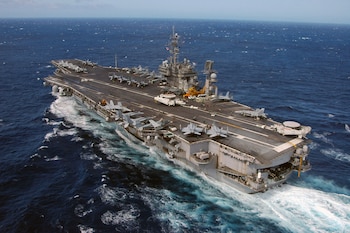
One of the most iconic aircraft carriers in the US Navy is on its way to the junkyard after being sold for less than a dollar, a clear sign that its glory time has long passed.
The USS Kitty Hawk was once the greatest symbol of U.S. military power in the Indian-Pacific, used in battles during the Vietnam War to the Persian Gulf and survived a collision with a Soviet submarine.
But those glory days are in the past. Now the aircraft carrier is in the middle of its last voyage until it reaches the port of Texas where it will be cut and sold for scrap metal.
During this last trip you have to cross a distance of more than 25,750 kilometers, from Bremerton Naval Base, Seattle (Pacific Coast) to the Port of Brownville, Texas (Atlantic Coast), and in between you will pass through the Port of Los Angeles (United States) Manzanillo (Mexico), Balboa (Panama), Valparaiso and Punta Arenas (Chile). Montevideo (Uruguay), Salvador (Brazil), Port of Spain (Trinidad and Tobago) and Brownsville (United States).
Last Sunday, the USS Kitty was spotted off the Chilean coast, indicating that it is almost halfway through until finally the International Shipbreaking Limited of Brownsville, Texas, a maritime company that bought it for less than a dollar from the U.S. Maritime Naval Systems Command, finally turns it into scrap metal. .
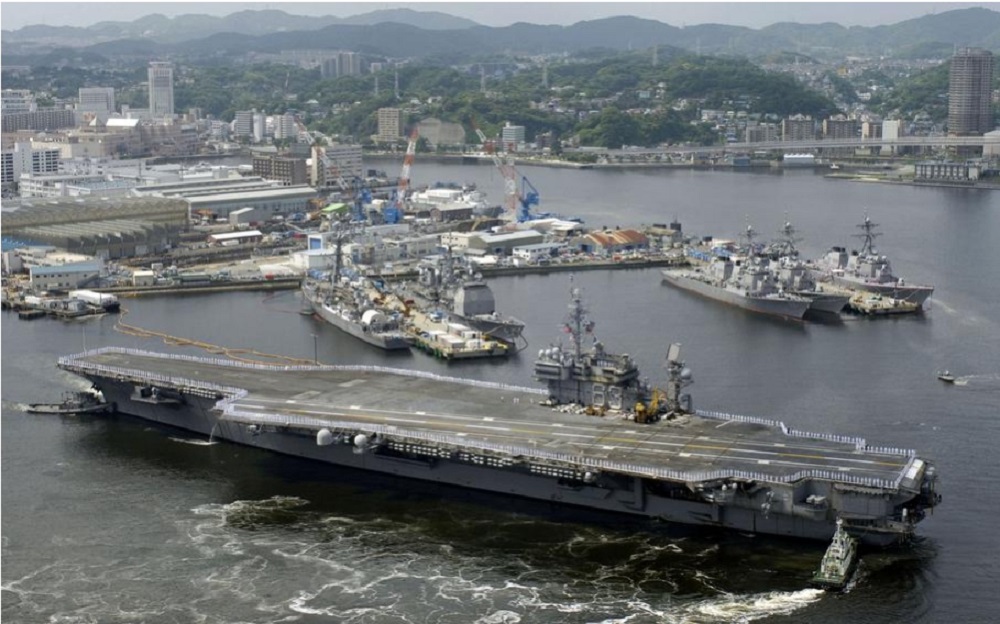
The main reason for this long journey, is that the 14.3 meters long and 77 wide aircraft carrier is too large to cross the Panama Canal and is forced to slide along the coast of South America and then climb to its final destination.
Launched in 1960 and named after the North Carolina area where the Wright brothers first flew a powered plane, Kitty Hawk served the U.S. Department of Commerce for nearly 50 years before it was discharged in 2009.
Kitty Hawk was the last American oil-powered aircraft carrier, a relic of an era before the arrival of Nimitz-class nuclear-powered ships.
Soon, all that will remain is a unique and sometimes tumultuous story that encompasses the Vietnam War and most of the Cold War, as well as social upheaval and transformation at home.
A riot on the high seas
Since the early 1960s and throughout that decade the Kitty Hawk was a pillar of American strength off the coast of Vietnam.
Sometimes, his plane flew more than 100 departures a day over Vietnam from what was called Yankee Station, the area of the South China Sea where U.S. warships sailed to launch attacks on North Vietnamese and Viet Cong forces.
In those glory years, the ship and its air wing received a Presidential Unity Citation, an award honoring extraordinary heroism for their actions in Vietnam from December 1967 to June 1968, highlighting support for American and South Vietnamese forces during the North Vietnam Tet Offensive in the spring of 1968.
The last Kitty Hawk fight in that conflict occurred in 1972, but in this final mission the aircraft carrier was the epicenter of a racial riot in what the United States Congress would later call “a sad chapter in the history of the Navy.”

Race riots erupted on the ship amid mounting tensions, after its deployment in Vietnam spread following a stopover in the Philippine port.
The reasons for the incident are not clear. Some say it started when black sailors were investigated for a Filipino bar fight the night before the deployment. But other versions point out that everything came unleashed after a black sailor refused an extra sandwich in the dining room but not a white one.
In any case, the confrontation was violent.
“The struggle spread rapidly throughout the ship, with bands of blacks and whites hanging around the decks and attacking each other with fists, chains, wrenches and pipes,” David Cortwright, now director of the Kroc Institute at the University of Notre Dame, wrote in a 1990 article.
The unrest and racial tensions aboard the Kitty Hawk certainly reflected the stark racial inequality in American society at the time.
According to a report by the Naval History Command, black sailors then constituted less than 10% of the crew of the Kitty Hawk that was 4,500 sailors. And only five of its 348 officers were black.
A congressional report on the incident on the night of October 12-13, 1972, said that the fight left 47 sailors injured, “all but 6 or 7 of them” were white.
And while that congressional investigation led to attempts by the military to address racial inequality, the subcommittee's report itself is riddled with harmful language that reveals just how deep racial prejudice was in the U.S.
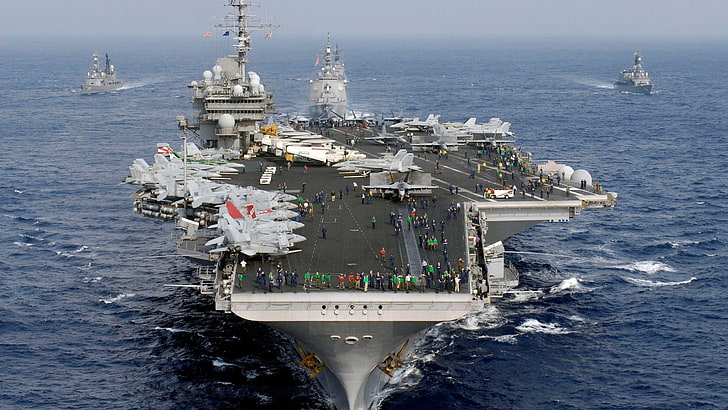
“The subcommittee is of the position that the mutiny in Kitty Hawk consisted of unprovoked attacks by very few men, most of whom had below-average mental capacity, most of whom had been on board for less than a year, and all of whom were black. This group, as a whole, acted as' thugs', raising doubts as to whether they should ever have been accepted into military service in the first place,” the final summary of the report reads.
Still, the incident, along with others on Navy ships, prompted service leaders to place new emphasis on programs previously initiated by Admiral Elmo R. Zumwalt Jr., the then chief of naval operations, aimed at improving race relations in the fleet.
According to navy statistics, this racial inequality continues to this day, with only 17.6% of the naval members being black.
Crossing with the Soviets.
During the height of the Cold War, Kitty Hawk had a tense crossing with a Soviet nuclear-powered submarine in which the US aircraft carrier took a piece of the Russian submersible stuck in its hull.
It happened in March 1984, when a Battle Bravo group led by Kitty Hawk was a focal point of the naval part of the annual Team Spirit joint exercises with South Korea.
Operating in open water halfway between Japan and South Korea, Kitty Hawk and his escorts had been playing what a Navy officer told the New York Times was a game of “cat and mouse” with the Soviet submarine, which was later determined to be K-314, a 5,000-ton Victor-class ship with a crew of about 90.
According to a report by the Naval History and Heritage Command, US forces had tracked and “killed”, or simulated its ability to sink, the Soviet submarine 15 times in the days leading up to the collision.
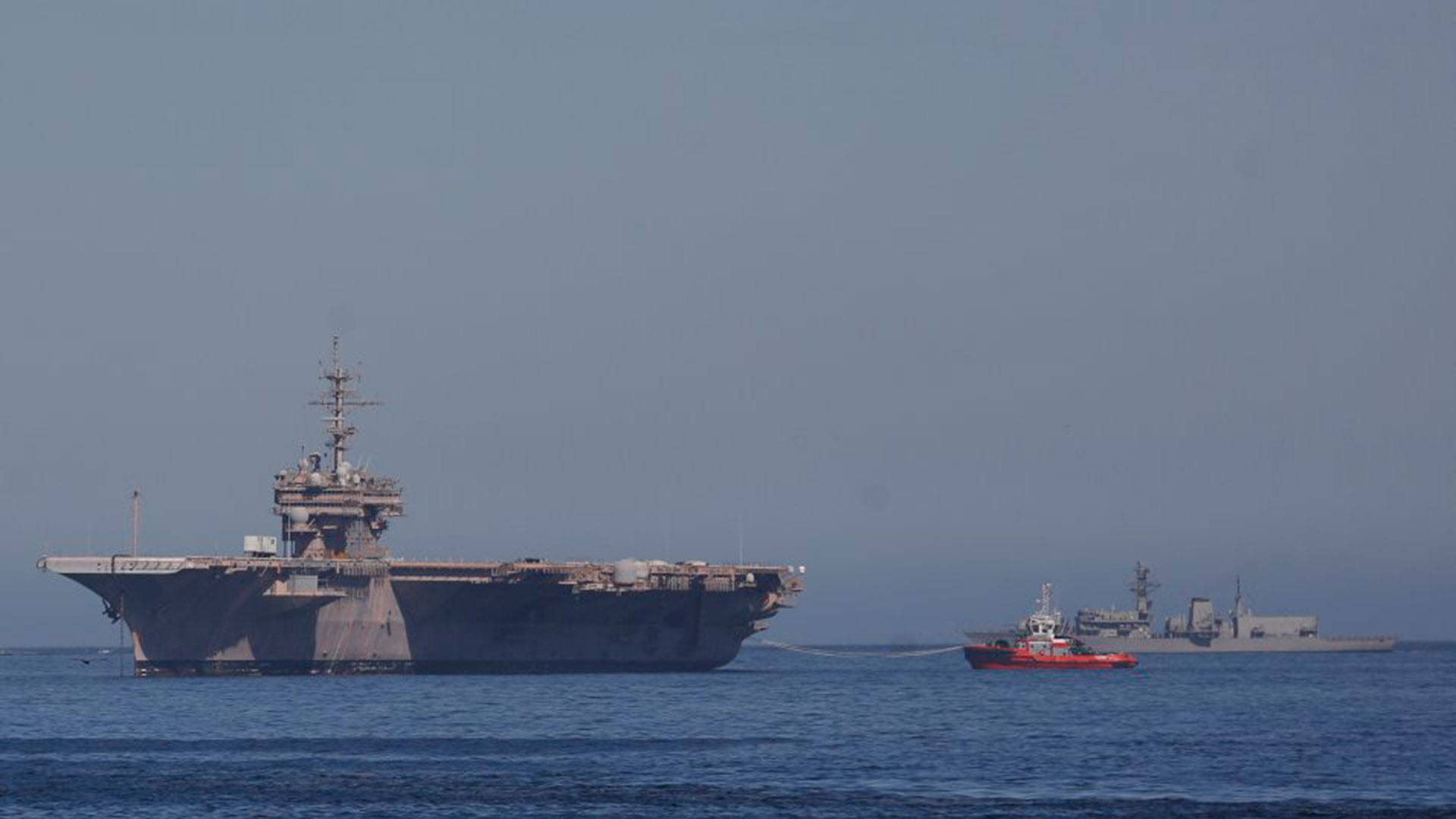
Then, the group of aircraft carriers began to practice “deception techniques” in order to lose its Soviet tracker. Just after 10:00 in the evening of March 21, 1984, the K-314 appeared in the path of the aircraft carrier.
“The commander (K-314) ordered the start of an urgent dive to avoid a collision. Shortly after the start of the dive, the submarine felt a strong blow. After a few seconds, a second powerful push. It was clear that the submarine did not have time to reach a safe depth and was hit by some of the American ships. As we later learned, it was the aircraft carrier Kitty Hawk,” states the Russian military website Top War.
The 5 thousand tons of the Soviet submarine were humiliated in front of the 80 thousand tons of the US aircraft carrier and without surprise it took the brunt of the collision.
According to the Navy report on the crash, everyone on the Kitty Hawk expected the submarine to sink and expected to detect it on the other side.
“The commander of the submarine apparently overestimated its distance from the aircraft carrier and did not begin to increase its depth until it was too late. So, he left a part of one of his screws (propellers) in the hull of the aircraft carrier,” Carl Schuster, a former US Navy intelligence officer, told CNN
He explained that an aircraft carrier cannot detect a submarine in the vicinity due to the noise of its propellers and the pressure wave it generates in the water.
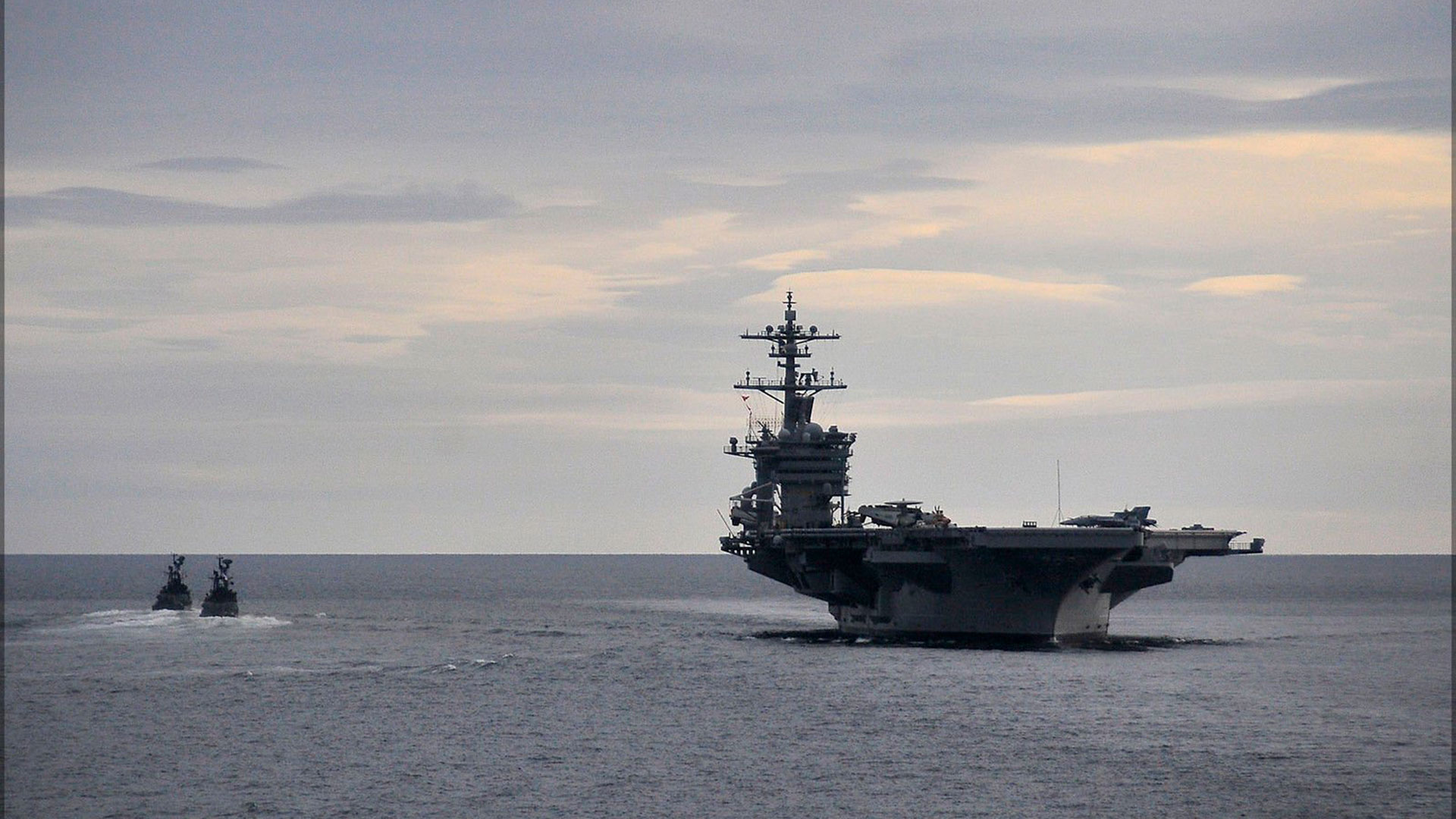
After the crash, the K-314 lost power and was towed to the Soviet port of Vladivostok, while the Kitty Hawk continued without problems, taking a Cold War trophy in that piece of Soviet submarine embedded in its hull.
After the Cold War, Kitty Hawk became a vital part of the US Pacific Fleet, finding a home port at the Yokosuka naval base in Japan from 1998 until it was withdrawn in 2008 and replaced by USS George Washington.
From then on, his decline began and ended up earning the nickname “Shitty Kitty”, due to the poor state in which he was in.
Very soon this symbol of old sluts will find its final rest among the scrap, sold for just one dollar.
KEEP READING
Últimas Noticias
Debanhi Escobar: they secured the motel where she was found lifeless in a cistern
Members of the Specialized Prosecutor's Office in Nuevo León secured the Nueva Castilla Motel as part of the investigations into the case

The oldest person in the world died at the age of 119
Kane Tanaka lived in Japan. She was born six months earlier than George Orwell, the same year that the Wright brothers first flew, and Marie Curie became the first woman to win a Nobel Prize

Macabre find in CDMX: they left a body bagged and tied in a taxi
The body was left in the back seats of the car. It was covered with black bags and tied with industrial tape
The eagles of America will face Manchester City in a duel of legends. Here are the details
The top Mexican football champion will play a match with Pep Guardiola's squad in the Lone Star Cup

Why is it good to bring dogs out to know the world when they are puppies
A so-called protection against the spread of diseases threatens the integral development of dogs




